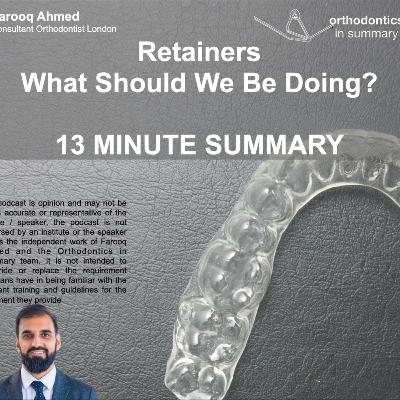Posterior Bolton’s Discrepancy. New Analysis To Solve Old Problems 5 MINUTE SUMMARY
Description
Join me for a summary looking at The Posterior Bolton Discrepancy,
a new take on the classic Bolton discrepancy. Wayne Bolton’s analysis has been
critically appraised and the outcome from Patrick Foley and his team has been
the formation of the posterior Bolton analysis, a new perspective on an established
tool in orthodontics which seeks to give better insight into the location of tooth
size discrepancies. He has also explored through his research the effects of
premolar extractions and the likely outcomes of compromised occlusal outcomes,
and where we should expect to see it within the posterior segment.
Wayne Bolton established the Bolton’s ratio:
·
Mesial distal widths of teeth
·
Original study 55 well treated cases
·
Anterior – ideal 77.2%
·
Overall 91.3% - Anterior tooth size discrepancy maybe
masked by a compensatory posterior discrepancy
What is the posterior Bolton’s ratio
·
Not included in original study
·
Formular sum of mandibular 4s, 5s, 6s,/
maxillary 4s, 5s, 6s x 100 = 105.27% - data from original Bolton’s study
Ratio confirmed by Mongillo 2021
·
N=55 patients ideal outcomes
·
Digital casts (from plaster)
·
Posterior ratio 105.77% +/- 1.99% Vs
Bolton’s data of 105.27%
The effect of 4 premolar extractions on the posterior
Bolton ratio
Study: Mongillo 2021 (extraction of all 4s) Holton 2023 (extraction
of upper 4s, lower 5s)
·
Posterior Bolton increases 107% +/- 2.23%
(or U4s and L5s 106.52 +/- 2.52%), ideal digital removal of teeth
·
Observed Bolton’s was 110.48 % = 3.18% above Bolton’s ideal
·
Space of 1.1mm – 1.28mm remains in mandible when
ideal arch – only 1 patient did not have space
Clinical options
i.
compromise occlusion
1.
slightly class 3 molar and class 1 canine
2.
class 1 molar and slightly class 2 canine
ii.
IPR upper arch
iii.
Bonding
·
Anterior and posterior Bolton may be valuable in
diagnosis and prediction than an overall Bolton



















